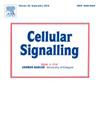Information on the potential role of the long non-coding RNA LNC-POTEM-4 in cancer progression is limited. Our preliminary study found that LNC-POTEM-4 was overexpressed in hepatocellular carcinoma (HCC) tissues, which led us to further investigate the biological function and molecular mechanism of LNC-POTEM-4 in HCC development. LNC-POTEM-4 expression in HCC tissues was examined using transcriptome sequencing and quantitative reverse transcription PCR. The relationships between LNC-POTEM-4 and the stage and prognosis of HCC in patient data from the TCGA database were analyzed. The effects of LNC-POTEM-4 on proliferation, invasion/migration, and epithelial-mesenchymal transition marker expression in HCC cells were evaluated in vitro using gain- and loss-of-function assays, while its effects on tumor growth and metastasis were explored through animal experiments. A LNC-POTEM-4/microRNA (miR)-149-5p/Wnt4 regulatory signaling axis was identified using bioinformatics analysis, and dual luciferase reporter, RNA immunoprecipitation, and RNA pull-down assays. Co-transfection of LNC-POTEM-4 and Wnt4 expression plasmids was employed to confirm the new signaling pathway. We found that LNC-POTEM-4 was overexpressed in HCC tissues and was linked to poor staging and prognosis. LNC-POTEM-4 promoted proliferation, invasion, migration, and the epithelial-mesenchymal transition of HCC cells in vitro. Silencing of LNC-POTEM-4 inhibited HCC growth and distant metastasis in vivo. Mechanically, LNC-POTEM-4 was found to function as a competitive endogenous RNA, upregulating Wnt4 by sponging miR-149-5p to promote HCC progression. Wnt4 overexpression may have counteracted the tumor-inhibition effect of LNC-POTEM-4 silencing. In conclusion, LNC-POTEM-4 upregulated Wnt4 to activate the Wnt signaling pathway and stimulate the malignancy tendency of HCC by sponging miR-149-5p, providing a prospective target for the detection and therapy of HCC. However, the effects of LNC-POTEM-4 on the miR-149-5p/Wnt4 signaling axis should be further studied in animal experiments.


